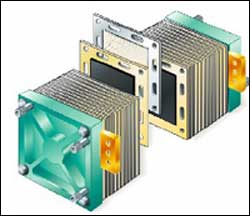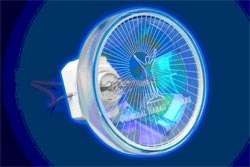This topic covers issues related to energy generation, conversion, transportation and consumption and how the industry is addressing the challenge of energy efficiency in general.
innovations-report provides in-depth and informative reports and articles on subjects ranging from wind energy, fuel cell technology, solar energy, geothermal energy, petroleum, gas, nuclear engineering, alternative energy and energy efficiency to fusion, hydrogen and superconductor technologies.

Given the right support, there could be 5-10 million fuel cell vehicles globally by 2020…
The time horizon for the Hydrogen Economy is long – it is at least 20 years away for developed countries. But long term change requires short term change…
China, India and Brazil have already developed active programmes of research on hydrogen fuel cells, which are tailored to their own needs and development goals…
By developing their hydrogen roadmaps now, de

Echoes of a “hydrogen economy” are reverberating across the country, but a number of roadblocks stand in the way. One of the biggest, experts say, is the high cost of manufacturing fuel cells. A new research project at Rensselaer Polytechnic Institute aims to tackle the challenge of mass production by using robots to assemble fuel cell stacks.
The project, which will combine the resources of Rensselaer’s Flexible Manufacturing Center (FMC) and Center for Automation Techno

Heraeus Launches the new VARIUS® System
Heraeus Noblelight GmbH, a company within the worldwide precious metals- and technology organisation Heraeus, will be represented at SOLARIA 2005 in Cologne by its Original Hanau SunCare Division. Original Hanau SunCare is the specialist for tanning lamps and UV technology for sunbeds. At SOLARIA, Original Hanau SunCare is launching the innovative VARIUS system, a system which offers high pressure output in a compact and flexible package.

Phosphate tungsten bronzes have been tested as cathodes in electrochemical lithium insertion cells
Since their discovery in 1830 the tungsten bronzes have been extensively studied due to their interesting chemical, electrical and optical properties. An interesting structural feature at the molecular level is the presence of long, empty tunnels. These tunnels can have other ions inserted into them to enhance and alter the properties of the base material.
This study, publis

Solar research at PSI takes a leap into the future today with the opening of the High-flux Solar Simulator. With this new instrument scientists will be able to carry out experiments under extremely high temperatures, independent of the weather.
The Laboratory for Solar Technology at PSI and the Professorship in Renewable Energy Carriers at ETHZ are jointly conducting research in high-temperature thermo-chemical processes to efficiently transform concentrated solar energy into sto

European space technology will boost the performance of at least one boat during this year’s Transat Jacques Vabre international sailing contest. The race starts on Saturday from Le Havre in France, and ends in Salvador de Bahia, Brazil.
Marc Thiercelin and his sailing partner Eric Drouglazet will be competing in Thiercelin’s 60-foot yacht ProForm. The yacht has more efficient solar cells, lighter batteries and an intelligent power management system, all based on technology